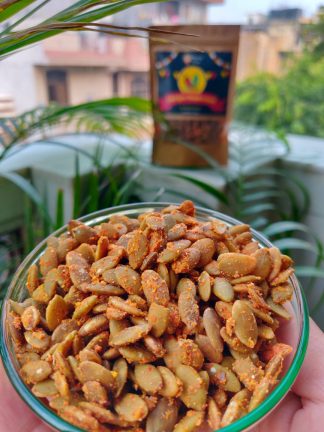
Welcome to Day 16 of Your Pilates Adventure!
Greetings, Pilates Warriors! As we stride into Day 16 of our transformative journey, we immerse ourselves in the realms of flexibility and mobility, seeking to unlock the gates of fluidity and grace in motion. Today, we embark on a quest to expand our range of motion, release tension, and cultivate a deep sense of ease and flow. So, let us step onto our mats with open hearts and open minds, ready to embrace the exhilarating journey of self-discovery and empowerment!
Introduction:
Day 16 marks a pivotal moment in our Pilates journey, where we dive deep into the exploration of flexibility and mobility. Through a series of dynamic stretches and mobilizing movements, we aim to liberate our bodies from stiffness and restriction, inviting in a sense of lightness and freedom. So, let us surrender to the rhythm of our breath and the fluidity of our movements, embracing the beauty of flexibility and mobility.
Before we start with the day, let us welcome you to the AI-powered 28-Day Free Wall Pilates Challenge! This challenge is designed using modern Artificial intelligence tools. We asked AI to act like a trainer and make a 28-day plan for us. We have put this up as a FREE challenge – do try this and let us know how you feel about it.
28-Day Wall Pilates Challenge
Select the Week to see Day Wise Guides to this AI Designed Challenge.
Warm-Up: Awakening Your Body (5 Minutes)
Dynamic Stretching Sequence (2 Minutes)
- Execution: Begin standing tall with your feet hip-width apart. Inhale deeply as you sweep your arms overhead, lengthening through the spine. Exhale as you hinge forward from the hips, reaching towards your toes with a straight spine. Inhale to lengthen the spine, then exhale as you bend your knees and roll up to standing. Continue to flow between forward folds and standing, allowing your body to gradually awaken and release tension.
- Breathing: Inhale deeply as you sweep your arms overhead, exhale as you hinge forward. Inhale to lengthen the spine, exhale to bend the knees and roll up. Coordinate your breath with the movement to enhance relaxation and release.
Cat-Cow Stretch (2 Minutes)
- Execution: Begin on your hands and knees with your wrists under your shoulders and knees under your hips. Inhale deeply as you arch your back, lifting your chest and tailbone towards the ceiling (Cow Pose). Exhale as you round your spine, tucking your chin towards your chest and drawing your belly button towards your spine (Cat Pose). Continue to flow between Cat and Cow poses, moving with the rhythm of your breath.
- Breathing: Inhale deeply as you arch your back into Cow Pose, exhale as you round your spine into Cat Pose. Coordinate your breath with the movement to enhance spinal flexibility and release.
Hip Opener with Knee Circles (1 Minute Each Side)
- Execution: Sit on the mat with your legs extended in front of you and hands resting on the floor behind your hips. Bend one knee and draw it towards your chest, placing the sole of the foot on the floor. Inhale deeply as you circle your knee out to the side, then exhale as you bring it back to the center. Continue to circle the knee for 1 minute, then switch sides and repeat.
- Breathing: Inhale deeply as you circle your knee out to the side, exhale as you bring it back to the center. Focus on deep, rhythmic breaths to enhance relaxation and release.
Main Session: Flexibility and Mobility (25 Minutes)
Standing Forward Fold with Shoulder Opener (3 Sets, 8-10 Reps)
- Execution: Begin standing tall with your feet hip-width apart. Inhale deeply as you sweep your arms overhead, lengthening through the spine. Exhale as you hinge forward from the hips, reaching towards your toes with a straight spine. Allow your head to hang heavy and your arms to dangle towards the floor. Inhale to lengthen the spine, then exhale as you bend your elbows and bring your hands behind your back, interlacing your fingers. Allow your arms to fall forward, opening through the shoulders. Hold the stretch for a few breaths, then release and repeat.
- Breathing: Inhale deeply as you sweep your arms overhead and lengthen the spine, exhale as you hinge forward. Inhale to lengthen the spine, then exhale as you bring your hands behind your back and open through the shoulders. Focus on deep, relaxing breaths to enhance relaxation and release.
Seated Spinal Twist with Side Bend (3 Sets, 8-10 Reps Each Side)
- Execution: Sit on the mat with your legs extended in front of you and hands resting on the floor by your hips. Bend one knee and cross it over the opposite leg, placing the foot flat on the floor. Inhale deeply as you lengthen your spine, then exhale as you twist your torso towards the bent knee, placing one hand on the floor behind you and the other hand on the outside of the bent knee. Hold the twist for a few breaths, then inhale to lengthen the spine and exhale as you side bend towards the extended leg. Hold the side bend for a few breaths, then inhale to return to the center and exhale to release. Repeat on the other side.
- Breathing: Inhale deeply to lengthen the spine and prepare for the twist, exhale as you twist your torso. Inhale to lengthen the spine, exhale as you side bend towards the extended leg. Focus on deep, rhythmic breaths to enhance relaxation and release.
Quadruped Hip Circles (3 Sets, 10-12 Reps Each Direction)
- Execution: Begin on your hands and knees with your wrists under your shoulders and knees under your hips. Inhale deeply as you circle your hips to one side, tracing a large circle with your pelvis. Exhale as you circle your hips to the other side, completing the rotation. Continue to move in a smooth, circular motion, allowing your hips to mobilize and your spine to gently flex and extend. Repeat for 10-12 repetitions in each direction.
- Breathing: Inhale deeply as you circle your hips, exhale as you complete the rotation. Focus on deep, rhythmic breaths to enhance relaxation and release.
Cooldown: Embracing Stillness (5 Minutes)
Supine Figure Four Stretch (2 Minutes Each Side)
- Execution: Lie on your back with your knees bent and feet flat on the floor. Cross one ankle over the opposite knee, flexing the foot. Use your hands to gently guide the crossed knee towards the opposite shoulder, feeling a stretch in the outer hip and glute. Hold the stretch for 2 minutes, then release and switch sides.
- Breathing: Inhale deeply to create space in the hips, exhale to deepen the stretch. Focus on deep, rhythmic breaths to enhance relaxation and release.
Child's Pose with Extended Arms (1 Minute)
- Execution: Begin in a kneeling position with your toes together and knees apart. Inhale deeply as you reach your arms forward and lower your chest towards the mat, resting your forehead on the floor. Extend your arms as far forward as possible, feeling a gentle stretch through the shoulders and upper back. Hold the pose for 1 minute, focusing on deep, relaxing breaths.
- Breathing: Inhale deeply to expand the chest and lengthen the spine, exhale to relax into the stretch. Focus on deep, rhythmic breaths to enhance relaxation and release.
Reflection and Gratitude
Congratulations on completing Day 16 of the 28-Day Wall Pilates Challenge! Take a moment to honor yourself for prioritizing flexibility and mobility in your Pilates practice. As you continue to embrace the beauty of fluid movement and the freedom of expansive range of motion, may you find joy in the journey and grace in every step. I'll see you tomorrow for Day 17, where we'll continue our Pilates practice with renewed energy and vitality.
Join Our 28-Day Wall Pilates Challenge
Are you ready to embark on a transformative journey to strengthen your body, mind, and spirit through Pilates? Welcome to our 28-day Wall Pilates Challenge, designed to ignite your passion for Pilates and unlock your full potential!
Overview:
- Duration: 28 days
- Focus: Core strength, flexibility, balance, endurance, and overall well-being
- Structure: Each week focuses on specific themes and goals, with daily workouts to guide you through the challenge.
Week 1: Core Foundations
Day 1: Core Foundations - Ignite Your Pilates Journey
Start your journey with foundational Pilates exercises to build a strong core and establish proper alignment.
Day 2: Balance and Alignment - Strengthen Your Core Connection
Focus on improving balance and alignment to enhance core stability and connection.
Day 3: Flexibility Flow - Unlock Your Body's Potential
Enhance flexibility and fluidity in movements to unlock your body's full potential.
Day 4: Power and Stability - Strengthen Your Pilates Foundation
Build power and stability for a solid Pilates foundation with challenging exercises.
Day 5: Endurance Elevation - Embrace the Power Within
Increase endurance and stamina through dynamic Pilates workouts.
Day 6: Harmony in Motion - Cultivating Balance and Coordination
Cultivate balance and coordination for graceful and harmonious movement.
Day 7: Rest and Rejuvenate - Nourishing Your Pilates Journey
Take a day to rest and rejuvenate your body and mind, allowing for optimal recovery.
Week 2: Mindful Movement
Day 8: Mindful Movement - Deepening Your Pilates Practice
Deepen your Pilates practice through mindfulness and focused movement techniques.
Day 9: Strengthen and Lengthen - Unleash Your Inner Warrior
Strengthen muscles while promoting lengthening and flexibility for a balanced body.
Day 10: Core Stability and Balance - Finding Your Center of Strength
Enhance core stability and find your center of strength through targeted exercises.
Day 11: Mobility and Flexibility - Embrace Fluid Movement
Embrace fluid movement by improving mobility and flexibility in your Pilates practice.
Day 12: Alignment and Posture - Discover Your Perfect Balance
Focus on proper alignment and posture to achieve balance and prevent injuries.
Day 13: Strength and Endurance - Building Resilience Within
Build strength and endurance to overcome challenges and build resilience.
Day 14: Rest and Recovery - Nourish Your Body and Mind
Take a well-deserved day of rest and recovery to rejuvenate your body and mind.
Week 3: Full Body Flow
Day 15: Balance and Coordination - Find Your Center of Gravity
Explore balance and coordination exercises to find your center of gravity and enhance stability.
Day 16: Flexibility and Mobility - Embrace Fluidity in Motion
Improve flexibility and mobility to move with grace and ease through dynamic movements.
Day 17: Core Strength and Stability - Ignite Your Power Center
Ignite your power center with core-strengthening exercises for stability and strength.
Day 18: Upper Body Strength and Toning - Sculpt Your Pilates Powerhouse
Sculpt and tone your upper body muscles for improved strength and definition.
Day 19: Balance and Coordination - Find Your Center of Gravity
Continue refining balance and coordination skills to enhance your Pilates practice.
Day 20: Flexibility and Mobility - Unlock Your Body's Potential
Unlock your body's full potential by increasing flexibility and mobility for greater range of motion.
Day 21: Rest and Reflect - Nourish Your Body and Mind
Reflect on your progress and take time to nourish your body and mind with rest and relaxation.
Week 4: Lower Body Strength
Day 22: Lower Body Strength - Building Foundations
Focus on building a strong foundation for lower body strength through targeted exercises.
Day 23: Core Power - Ignite Your Center
Ignite your core power with exercises designed to strengthen and stabilize your center.
Day 24: Full Body Flow - Harmony in Motion
Experience the harmony of full-body movement with flowing Pilates sequences.
Day 25: Lower Body Burn - Sculpt and Strengthen
Sculpt and strengthen your lower body muscles with targeted exercises to feel the burn.
Day 26: Core Strength - Ignite Your Powerhouse
Ignite your powerhouse with core-strengthening workouts for a strong and stable center.
Day 27: Flexibility and Mobility - Embrace Fluidity
Embrace fluidity in movement by enhancing flexibility and mobility in every workout.
Day 28: Final Challenge and Celebration - Embrace Your Triumph
Celebrate your achievements and embrace the final challenge as you complete the 28-Day Wall Pilates Challenge.
We invite you to join us on this exciting journey and share your experiences and feedback. Together, let's fine-tune and improve this challenge to help others achieve their fitness goals. Are you ready to embrace the 28 Days Wall Pilates Challenge? Let's get started!
Don't forget to check out our interactive navigation app above to easily access each day's workout details. Let the challenge begin!
Best regards,












